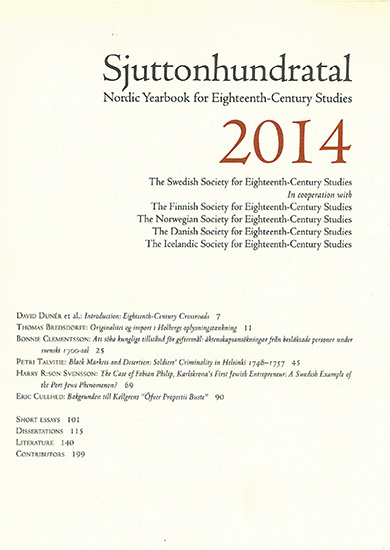Bakgrunden till Kellgrens ”Öfver Propertii Buste”
DOI:
https://doi.org/10.7557/4.3085Keywords:
Johan Henric Kellgren, Frederik Plum, Guido Postumo, translation, ekphrasis, advice-to-a-painter poemsAbstract
The Background to Kellgren’s ”On a bust of Propertius”. This article examines the Swedish eighteenth-century poet Johan Henric Kellgren’s widely celebrated epigram “On a bust of Propertius” (“Öfver Propertii Buste eller Porträt”), published posthumously. An attractive but fanciful story about the poem as Kellgren’s autobiographical reflection and personal farewell on his deathbed has triggered an unwillingness among scholars to explore what the writer himself declares: that the piece is a translation of the epigram In statuam Propertii by the virtually unknown Italian Renaissance poet Guido Postumo Silvestri of Pesaro. The first section of the article surveys the intertextual field of Postumo’s poem and analyses its fusion of common tropes and motifs in the Greco-Roman and Neo-Latin ekphrastic epigram traditions. The second section traces the subsequent textual history of Postumo’s poem and the changes it underwent in reprints as well as in the eighteenth-century Danish philologist Frederik Plum’s translation into his native language. The third and final section focuses on Kellgren’s interpretation of the Danish text. It was through a process in several steps of reproductions and translations that the Neo-Latin creation was strained of its manierism, mythological references and allusions to late antique poetry, producing this pathos-driven swansong.Metrics
Metrics Loading ...









